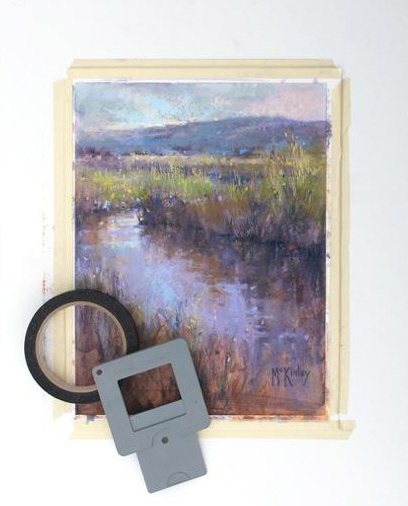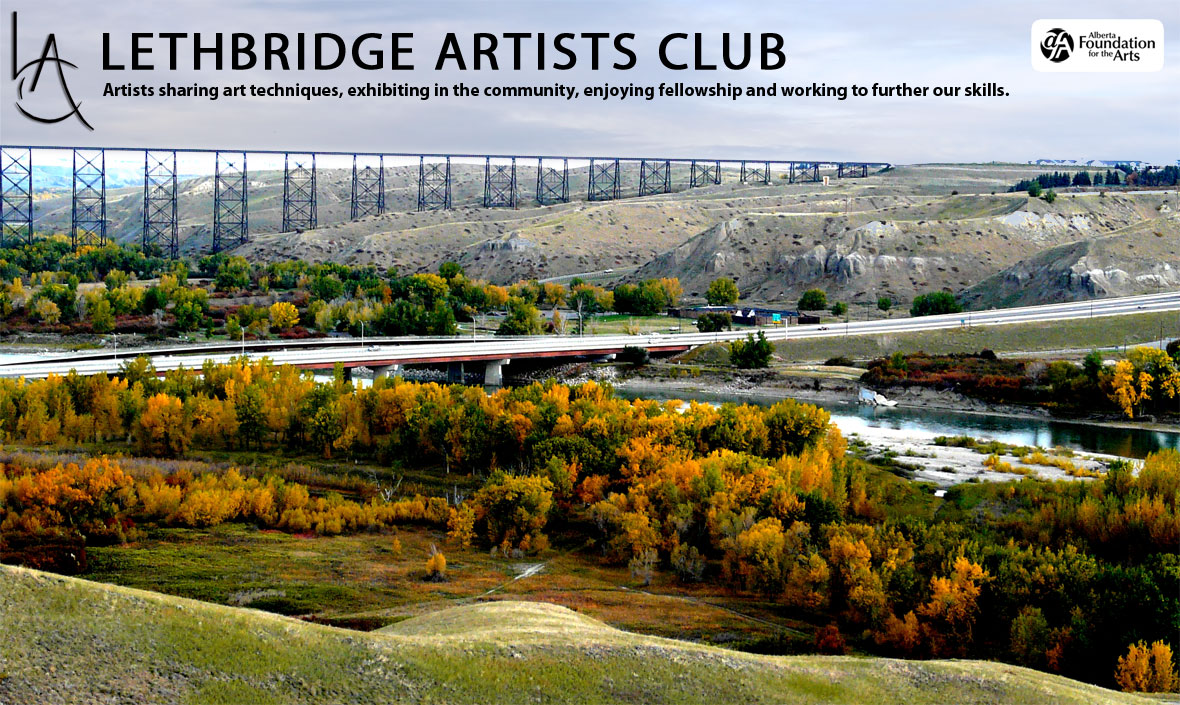
Landscape Painting Tips October 15, 2012 by Richard McKinley
When we view a painting, we are perceptively transported into a scene of the artist’s design. The encapsulating of the painting on all sides heightens this magical phenomenon, making the most important edges in a painting the perimeter. This is why most artwork is presented with a frame, or displayed on a flat neutral background when presented unframed. Besides the obvious framing benefits of a delineated edge, the encapsulation perception that it creates can prove useful when painting.
Some key tools to finding a good view: a “View Catcher” viewfinder and a roll of black PH neutral masking tape, shown with a large Gatorboard drawing board with pastel surface adhered.
Use a Viewfinder to Isolate the Scene:
Determining what to paint when working en plein air can be a daunting task. It’s easy to become artistically gluttonous and attempt to put too much into a painting composition, or not see the potential of a scene that is right in front of us. This is where the use of a viewfinder can prove invaluable. It can isolate subject matter, separate it from surrounding distractions, allow us to analyze compositional elements, and help to keep us visually contained while painting a landscape. A viewfinder may consist of two L-shaped pieces of cardboard, a commercially available barn-door viewfinder , the viewfinder of a camera, or your hands.
(Picture on right: Eliminate Visual Clutter With a Drawing Board Border)
When landscape painting, either on location or in studio, suspending the painting surface on a drawing board that is considerably larger will create a visual border, separating it from its surroundings. Outdoor settings can be busy and a studio can be cluttered, but a wide drawing board border will allow the artist to better evaluate the progress of a painting without being visually distracted. When feasible, I have a minimum border of three or four inches. Black Tape for a Clean Border:
As a pastel painting unfolds, it is easy for its edges to appear messy, especially when it is suspended upon a drawing board. Re-establishing a clean border can have a profound encapsulation effect. While in theory any product capable of creating a clean edge would work, my personal preference is PH-neutral black masking tape. When starting a painting, I adhere the surface to the drawing board with a standard tan-colored drafting/masking tape. It is neutral in tone and does not visually compete with the painting’s value and color relationships. Towards the end of the painting, I place a 1-inch-wide strip of PH-neutral masking tape around the painting, creating a clean border. The contrast of the black tape better contains the composition for final evaluation. It never ceases to astonish me how differently the painting appears once this is done.
It is in our nature to be easily distracted: any shiny object can divert our attention. Just like the old carriage horse that required blinders to stay on course, we can employ a common viewfinder, a larger drawing board, and a simple strip of masking tape to alleviate the surrounding distractions that can so easily pull us off track.
